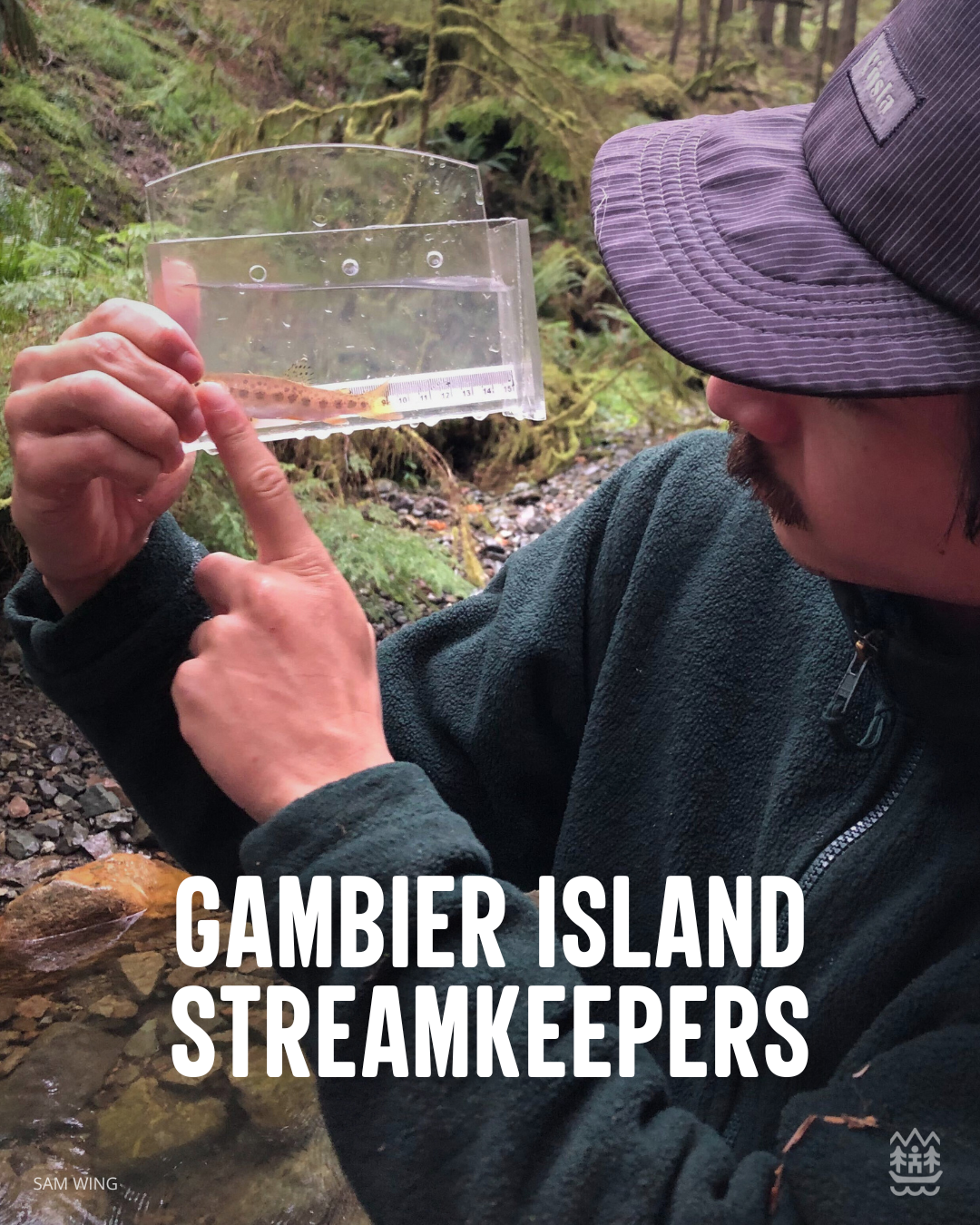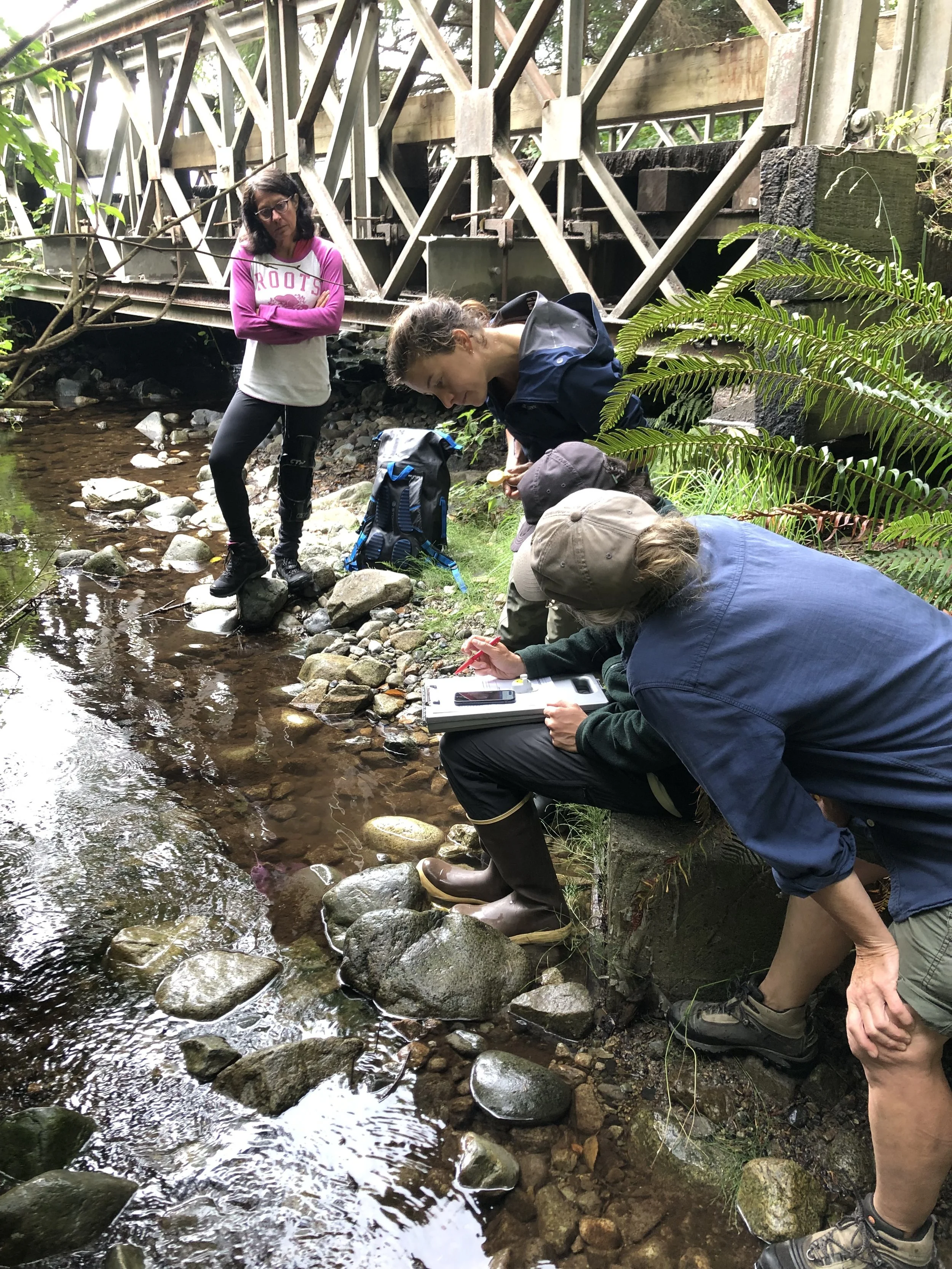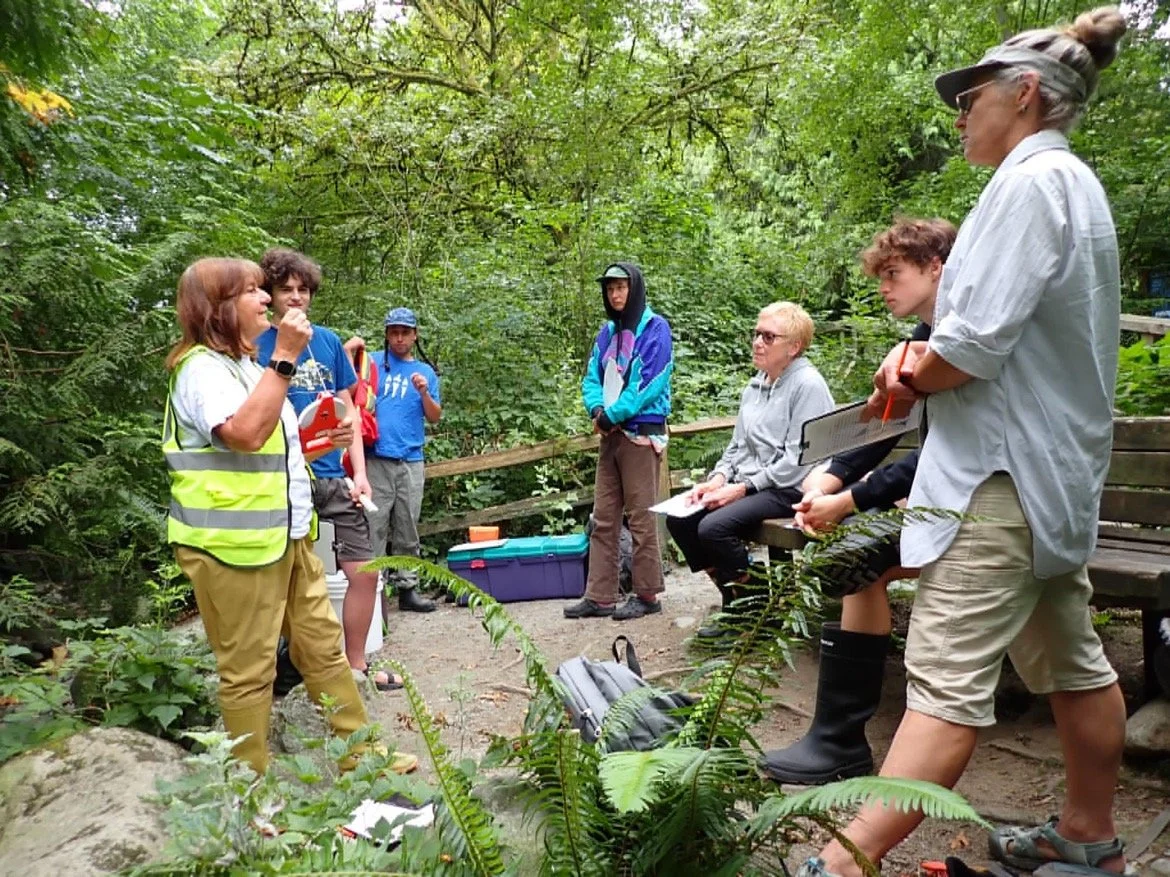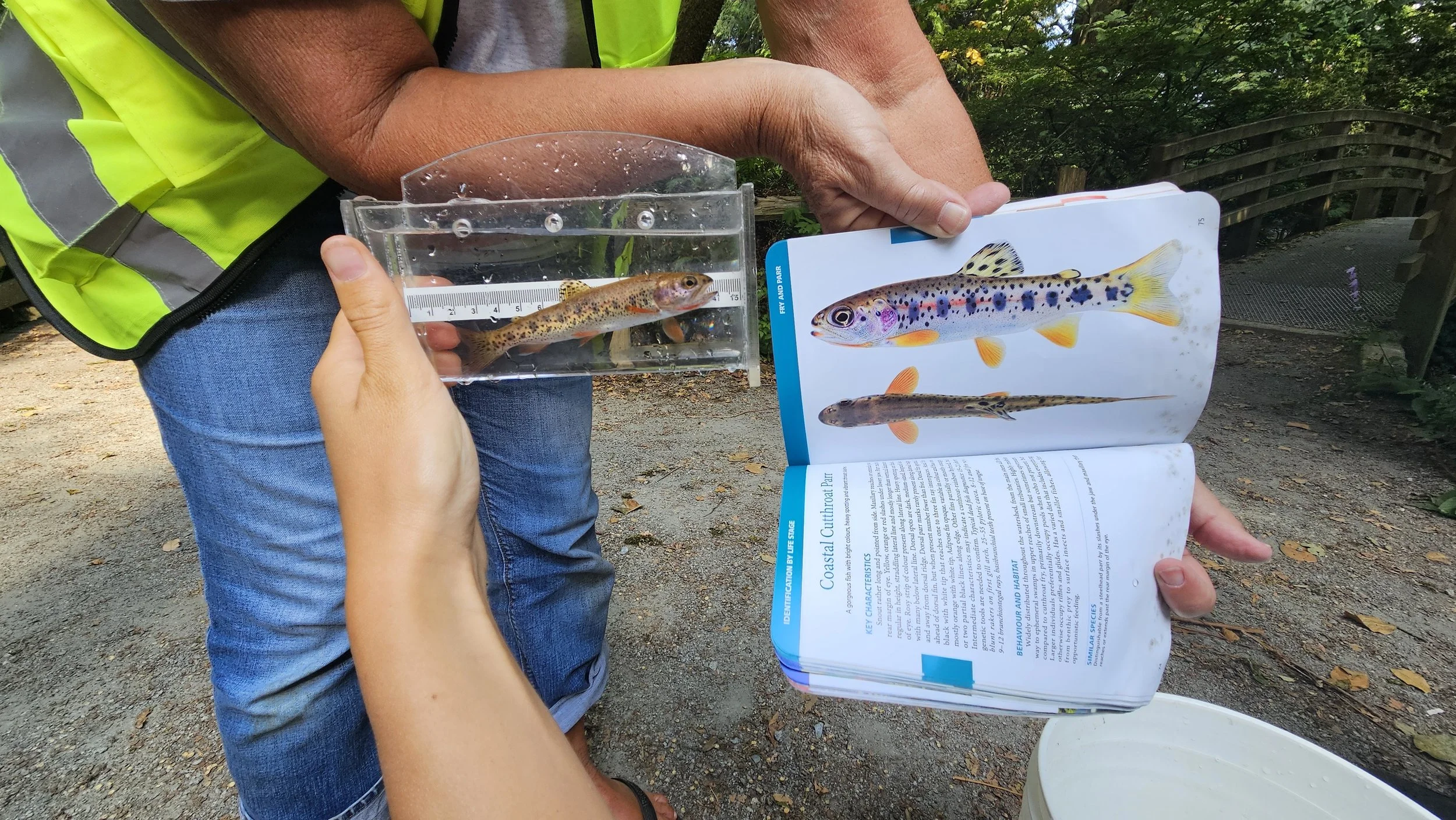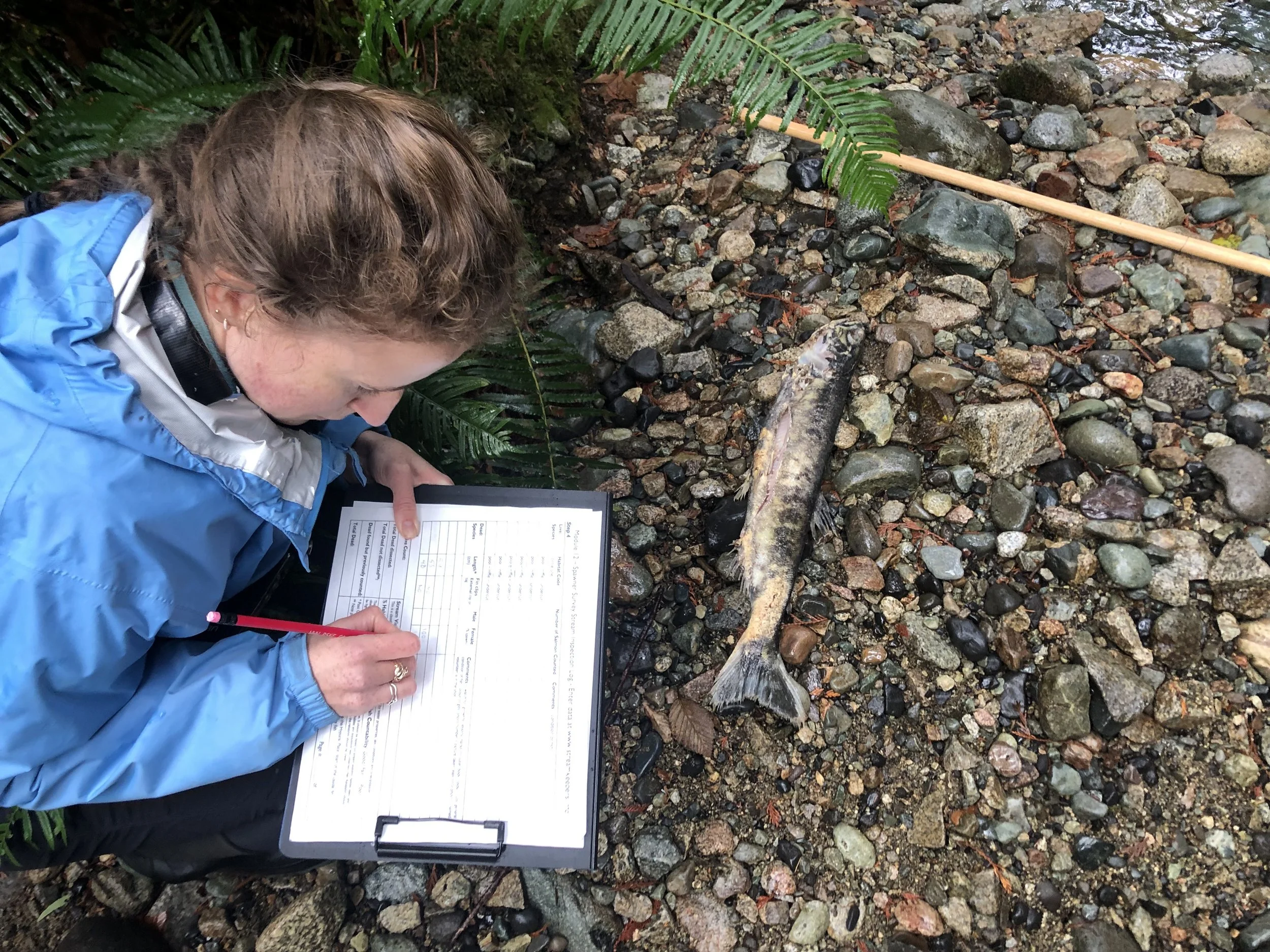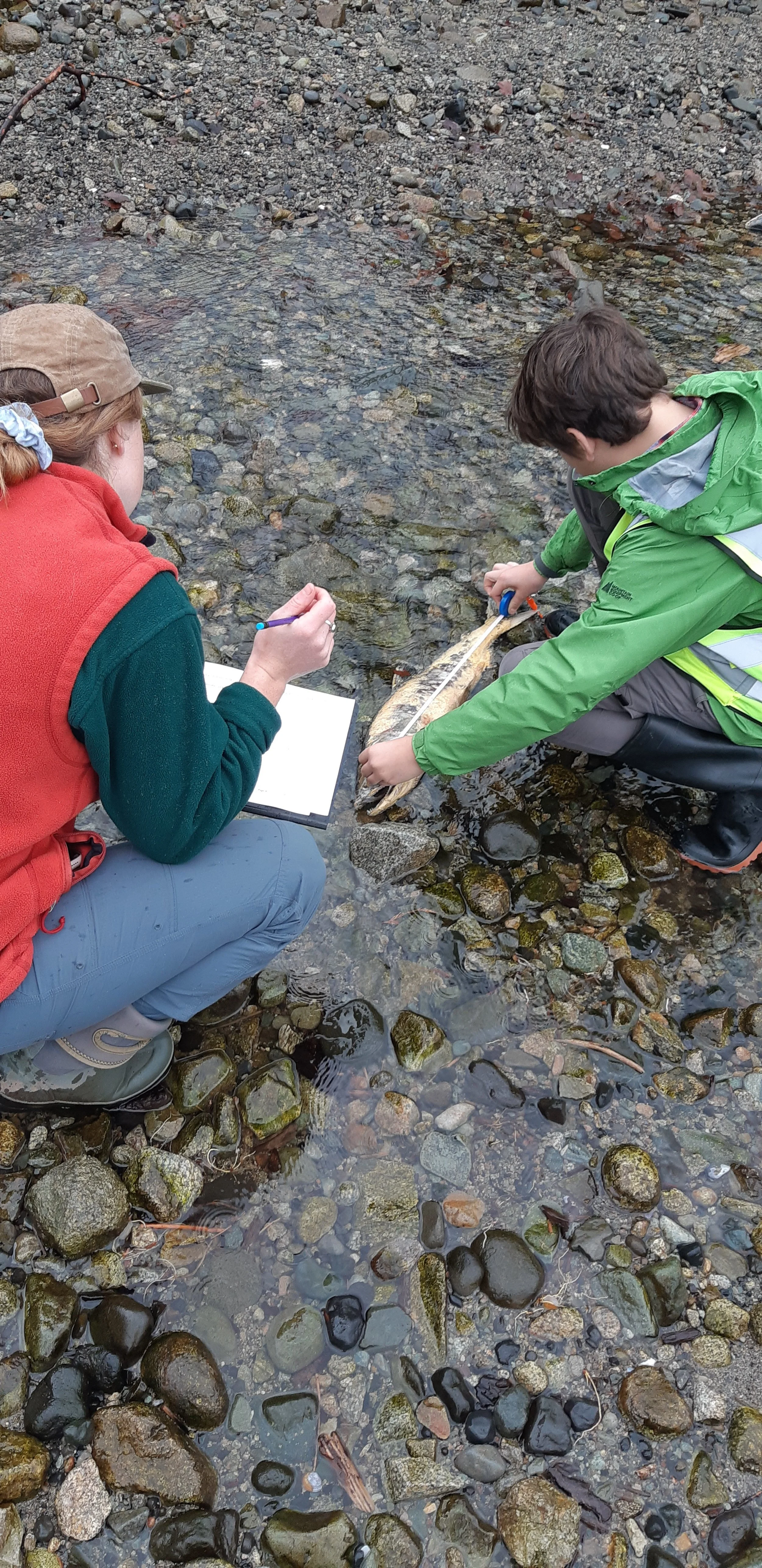Knowing our Fish Creeks in Átl’ḵa7tsem/Howe Sound
The many streams and rivers of our biosphere region are important to keystone—critical—species such as salmon and other fish species that contribute to the overall well-being of our region, our home. We can protect the health of these species and these streams. Support the training of more amazing Gambier volunteers to become Streamkeepers and to continue working in collaboration with the Gambier Island Conservancy towards filling the knowledge gaps in the region. Small or large, your donations greatly help our ongoing education and fieldwork.
Charitable donations can be made here to this fund.
Our biosphere region, with over 40 watersheds, provides important habitat for salmon, trout, and herring. Salmon species such as Pink, Chum, Chinook, Sockeye, and Coho use streams and creeks to spawn. Other species, such as sea-run Coastal Cutthroat Trout and Steelhead Trout, will stay in streams for an average of 2-3 years to spawn, incubate, and rear offspring before migrating to the sea. More permanent residents of Átl’ḵa7tsem/Howe Sound streams include resident Cutthroat Trout, Rainbow Trout, Dolly Varden, Char, Eastern Brook Trout, and Kokanee Salmon. Salmonids in streams carry out important ecosystem services such as acting as a source for marine-derived nitrogen when adult salmon decompose after spawning. These freshwater streams are essential habitats in the food chain. Many amphibians, mice, otters, and sculpins enjoy and rely on clean water from these streams.
Before settlers and traders arrived in the mid-eighteen hundreds, Coastal First Nation Peoples were in these watersheds, hunting, fishing, and travelling these waterways. The knowledge and wisdom of these watersheds passed on through generations since time immemorial, has been lost through assimilation. We must seek out the remaining knowledge holders and listen to the wisdom of valuing intact watersheds as we face the growing challenges of climate change and biodiversity loss.
In 2023, we studied what settlers today know or do not know about our fish-bearing creeks in the region. This report is here and will be updated in 2025.
The Squamish River watershed from the headwaters to the estuary at the head of Howe Sound has been well studied, however, efforts to restore fish habitat only began in 1993 when concerned people partnered with the Sḵwx̱wú7mesh Úxwumixw (Squamish Nation). Ta'hax7wtn/Randall Lewis brought his knowledge of the ages to the leadership of the Squamish River Watershed Society. This area was Randall’s ancestral home. He hiked, fished, hunted and logged in this watershed and today he is still actively on the land. Work is still being done within the Squamish watershed to restore fish habitats from decades of past disturbance due to road building and industrial activity. The challenge now is the consequences of climate change affecting water flows and silt production from glacier melt. The combined efforts of the Squamish River Watershed Society, Squamish Streamkeepers, Tenderfoot Hatchery, Fisheries and Oceans Canada, Innergex, BC Hydro, Cheakamus Centre and other knowledge keepers serve these mighty Ashlu and Squamish rivers and their tributaries.
The West Vancouver Streamkeepers, a dedicated group of volunteers, have worked hard to protect fish-bearing creeks for decades. Bowen Island’s Fish and Wildlife Club has been monitoring fish activity for many years and operates the Terminal Creek hatchery. The watersheds in the portion of the Sunshine Coast within the Biosphere have been heavily impacted to support BC Ferries, roads, logging, and industrial activities. The history of success and failure of compensation channels built to offset the destruction of fish habitat is a long story. The Sunshine Coast Streamkeepers are always looking for more volunteers and support.
For many creeks, funding and energy are funnelled toward restoration projects as a result of past industrial and development harm and toward fish with commercial value. When human intervention has occurred with Mother Nature, the work never ends.
Howe Sound is also blessed with fish-bearing creeks and waterways that have escaped human interference. Knowing that data is important to understanding what we have, we have focused on creeks on Chá7elkwnech/Gambier Island, where little data has been collected and recorded so far.
We learned from interviewing streamkeepers that knowing the fish-bearing creeks close to where you live, where you can witness the beautiful cycles of nature, is rewarding and addictive. Knowing and caring for our fish-bearing creeks is a project that engages the local community, develops local citizen scientists, collects data, and submits it to the authorities that make land-use decisions.
With at least ten watersheds on remote Chá7elkwnech/Gambier Island, we initiated a stream-keeping program that complements the earlier project of Searching for Wex̱és (frogs) eDNA sampling for Coastal Tailed Frogs.
The Knowing Our Fish Creeks project on Chá7elkwnech/Gambier Island had a successful 2024 field season. Thank you to all of the volunteers who joined us along the way. Our staff have enjoyed becoming more familiar with the stream ecosystems on Chá7elkwnech and working with the local community.
Highlights included hosting a streamkeeper training course in collaboration with the Pacific Streamkeepers Federation with over half of the participants being Chá7elkwnech community members, completing introductory habitat assessments and installing temperature loggers in five fish-bearing creeks across the island, and engaging with community members across the island. Howe Sound Biosphere Region Initiative Society (HSBRIS) staff members Joey and Sam along with local biologist Mike Stamford and several amazing volunteers were fortunate to be joined by Nikki Kroetsch with the Department of Fisheries and Oceans Community Stream Monitoring Project who showed them how to install the temperature loggers and download the data, setting them up for success in long-term temperature monitoring. Several engaged volunteers have made this project a success so far by joining on field days, assisting in project activities and sharing their perspectives. We have also had the chance to work in the field with staff from the Sḵwx̱wú7mesh Úxwumixw/Squamish Nation Archaeology and Environment Technician Program as well as members of the Gambier Island Conservancy.
Progress has been made in filling knowledge gaps such as the character of barriers to fish passage, documentation of fish presence in Grennon and McDonald creeks, documentation of the chum salmon run in Whispering Creek, and preliminary documentation of the run in Long Bay Creek. We are delighted to announce that we are collaborating with the Gambier Island Conservancy on this project and look forward to continuing to support the health of Chá7elkwnech creeks and the species around and within them as well as continuing to engage with community members and streamkeepers across the island.

